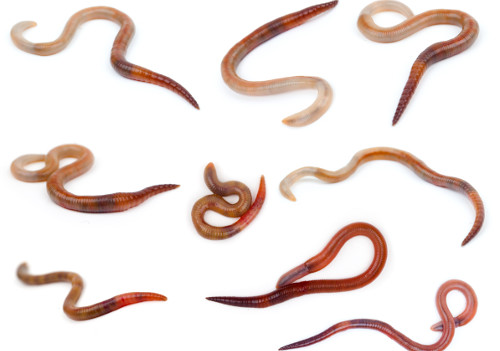Red Wiggler Worms - Perfect for Vermicomposting and Dirt Enrichment
Red Wiggler Worms - Perfect for Vermicomposting and Dirt Enrichment
Blog Article
Red Wiggler Worms Demystified: Opening the Tricks of Vermiculture for Greener Living and Nutrient-Rich Dirt
In the world of lasting methods for enriching soil high quality and advertising eco-conscious living, red wiggler worms play a crucial yet often overlooked duty. These simple creatures possess the amazing ability to change organic waste right into nutrient-rich spreadings that act as a powerful natural plant food. By delving right into the world of vermiculture, one can uncover a myriad of advantages that expand much beyond traditional composting methods. Comprehending the complexities of caring for these worms, enhancing their atmosphere, and utilizing their castings can cause a greener lifestyle and healthier dirt for plants to grow.
The Role of Red Wiggler Worms
Red Wiggler worms play a crucial duty in composting systems by efficiently damaging down organic issue into nutrient-rich spreadings. These starved eaters eat a variety of organic products, such as cooking area scraps, yard waste, and paper products. As they feed, the worms' digestive processes break down the raw material right into a fine, dark, and nutrient-dense product known as worm spreadings or vermicompost.
The spreadings generated by Red Wiggler worms are highly valuable for soil health and wellness and plant development. They are abundant in crucial nutrients like nitrogen, phosphorus, and potassium, which are important for supporting healthy plant advancement. Furthermore, worm spreadings include beneficial microbes and enzymes that help enhance soil structure, increase water retention, and boost nutrient uptake by plants.
Advantages of Vermicomposting

It boosts soil framework, improves soil oygenation, and increases soil wetness retention. Vermicompost additionally enriches the soil with crucial nutrients like phosphorus, nitrogen, and potassium, promoting plant growth and general dirt fertility.
In addition, vermicomposting supports lasting horticulture practices by offering a all-natural and chemical-free choice to artificial fertilizers. Red Wiggler Worms. This ecologically friendly strategy not only enriches the dirt yet also helps in reducing dependence on hazardous chemicals, promoting a greener and much more lasting way of horticulture
Establishing a Worm Container
When establishing a worm container for vermicomposting, proper setup is important to make sure the success of the composting procedure. The initial step in establishing up a worm container is selecting an ideal container. This can be a plastic container or wood box that supplies sufficient area for the worms to walk around and has proper drainage holes to stop waterlogging. Next off, a bed linens product such as page shredded newspaper, cardboard, or coconut coir must be contributed to the bin. This bedding provides a comfy setting for the worms and assists preserve dampness degrees.
After including the bed linens, introduce the red wiggler worms to the bin. It is advised look at these guys to begin with a handful of worms and gradually enhance as they increase. The worms need to then be provided with food scraps such as fruit and veggie peels, coffee premises, and eggshells. It is vital to avoid adding meat, dairy, oily, or salty foods to stop bring in pests and developing unpleasant smells.
On a regular basis keep track of the dampness levels and temperature level in the worm bin to make certain optimal conditions for the worms. With appropriate configuration and maintenance, the worm bin will efficiently transform organic waste right into nutrient-rich garden compost for your plants and garden.
Collecting Worm Castings
To successfully gather nutrient-rich worm castings from your vermicomposting system, an organized harvesting method is necessary. When it comes time to collect the worm castings, there are a couple of essential actions to follow to make sure a successful process. Quit including fresh food scraps to one side of the worm container for a couple of weeks prior to harvesting. This urges the worms to move to the side with fresh bedding and food, making it less complicated to dig the castings from the opposite side.

Troubleshooting Common Issues
Recognizing and addressing usual challenges that may arise during the vermicomposting process is vital for preserving a healthy and balanced and productive worm container. Adding excess food scraps can lead to an accumulation of moisture and acidity in this page the worm container, potentially damaging the worms. An additional concern is undesirable odors emanating from the worm container.
In addition, if the worm populace is declining or the worms show up unhealthy, it can be due to ecological stressors such as severe temperature levels or pH levels. Monitoring these elements and making required changes is vital for the well-being of the worms. By fixing these typical concerns quickly, vermicomposters can guarantee a effective and smooth vermicomposting procedure while preserving a prospering worm populace.

Conclusion
In conclusion, red wiggler worms play an important role in vermiculture by damaging down organic matter right into nutrient-rich soil. Setting up a worm bin is essential for successful vermiculture, and gathering worm castings supplies useful garden compost for horticulture.
As they feed, the worms' digestive procedures damage down the organic matter right into a penalty, dark, and nutrient-dense material recognized as worm castings or vermicompost.
The spreadings produced by Red Wiggler worms are very advantageous for soil health and plant growth. Including excess food scraps can lead to an accumulation of wetness and level of acidity in the worm container, possibly damaging the worms.Furthermore, if the worm populace is decreasing or the worms show up unhealthy, it could be due to ecological stress factors such as severe temperatures or pH degrees. Setting up a worm bin is essential for effective vermiculture, and gathering worm spreadings gives valuable garden compost for gardening.
Report this page